8:00-8:30am: Registration and Breakfast
8:30-8:40am: Welcome - Co-Chairs
8:40-10:00am: Plenary Session 1
8:40-9:00am
Pearls in the management of paediatric atopic dermatitis
Learning Objectives:
- Assess and recognize key features of atopic dermatitis and mimickers in pediatric populations
- Contrast differences in presentations of infectious complications in atopic dermatitis
- Outline practical management plans involving new and old antiinflammatory treatments

Dr. Cathryn Sibbald
9:00-9:20am
Getting a grip on hand eczema
Learning Objectives:
- Hand dermatitis typically has multiple triggers which need to be addressed for treatment success
- Review the importance of cleansers and moisturizers when treating hand dermatitis
- Review the oral treatments available for chronic hand dermatitis as well as preventative topicals presently available and new drugs in the pipeline

Dr. Sandy Skotnicki-Grant
9:20-9:40am
Safety and indications of JAK inhibitors in dermatology
Learning Objectives:
- Describe the mechanism of action of JAK inhibitors and their role in modulating immune pathways in dermatologic conditions
- Review the approved indications and availability of oral and topical JAK inhibitors in Canada
- Summarize the efficacy and safety data for oral and topical JAK inhibitors, and outline key counseling points for patients regarding their use

Dr. Maxwell Sauder
9:40-10:00am
Management of itch and prurigo nodularis
Learning Objectives:
- Outline an approach to the itchy patient
- Review topical and oral therapies for treating itch
- Review new and emerging treatment options for prurigo nodularis

Dr. Daniel Wong
Q & A Time (15 mins)
10:15-10:30am: 15-minute Coffee Break and Exhibit Viewing
10:30-11:45am: Plenary Session 2
10:30-10:50am
Treatment landscape of psoriasis
Learning Objectives:
- Review the topical and systemic treatment options available for plaque psoriasis
- Discuss the therapeutic treatment ladder for psoriasis patients
- Highlight novel therapeutic classes available for the treatment of psoriasis
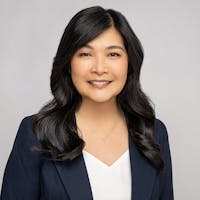
Dr. Perla Lansang
10:50-11:10am
Scaling back seborrheic dermatitis
Learning Objectives:
- Gain information on the different clinical presentations of seborrheic dermatitis in different skin tones and at different body sites
- To obtain advanced knowledge of non-prescription and prescription based treatments for seborrheic dermatitis
- To gain an understanding of systemic (i.e. oral) therapies to control severe seborrheic dermatitis
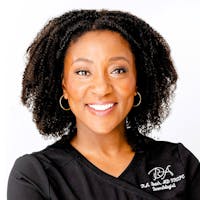
Dr. Renée Beach
11:10-11:45am
PLATINUM SESSION: Clinical conundrums in common chronic inflammatory dermatoses
Learning Objectives:
- Review clinical features in the differential diagnosis of common inflammatory skin dermatoses seen in primary care
- Assess topical treatments recently approved by Health Canada for managing plaque psoriasis, seborrheic dermatitis, and atopic dermatitis
- Discuss real world clinical cases on practical management tips for the busy primary care practitioner
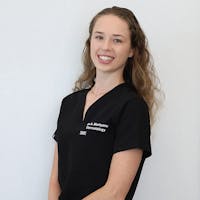
Dr. Anastasiya Muntyanu
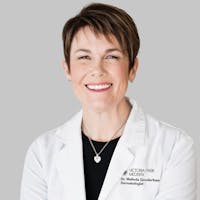
Dr. Melinda Gooderham

Dr. Farheen Mussani

Q & A Time (15 mins)
12:00-1:00pm: Lunch
1:00-2:20pm: Plenary Session 3
1:00-1:20pm
Beyond the surface: innovations in acne management
Learning Objectives:
- Review novel topical and systemic therapies for acne in 2024
- Discuss therapeutic options for treatment of acne sequelae
- Highlight upcoming therapeutics for acne management
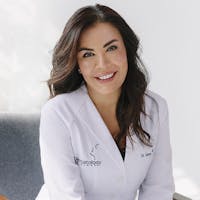
Dr. Sonya Abdulla
1:20-1:40pm
Management of rosacea and perioral dermatitis
Learning Objectives:
- Identify key differences between rosacea and perioral dermatitis in terms of clinical presentation
- Provide practical advice regarding trigger avoidance and long-term management for patients suffering from these conditions
- Implement stepwise pharmacologic treatment options for both conditions
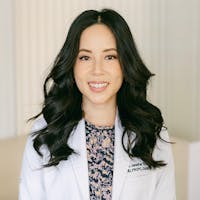
Dr. Jennifer Tran
1:40-2:00pm
Fighting melasma and hyperpigmentation
Learning Objectives:
- Differentiate between melasma and other forms of hyperpigmentation by recognizing key clinical features, common triggers, and patient risk factors to improve diagnostic accuracy in primary care settings
- Explain the pathophysiology of melasma and hyperpigmentation, including the role of UV exposure, hormonal influences, and inflammation, to enhance understanding of treatment strategies
- Outline evidence-based management approaches for melasma and hyperpigmentation, including topical therapies, procedural interventions, and lifestyle modifications, to optimize patient outcomes in family medicine practice

Dr. Jaclyn Linzon-Smith
2:00-2:20pm
PLATINUM SESSION: Topical retinoids in acne management
Learning Objectives:
Coming soon

Dr. Kim Blakely

Q & A Time (15 mins)
2:35-2:50pm: 15-minute Coffee Break and Exhibit Viewing
2:50-4:10pm: Plenary Session 4
2:50-3:10pm
Skin cancer management for the community physician
Learning Objectives:
- Become familiar with the morphology of the most common skin cancers
- Recognize mimickers of skin cancer
- Recognize skin cancer in richly pigmented skin
- Initial work up and treatment of suspected skin cancers

Dr. Erin Dahlke
3:10-3:30pm
Filtering facts: Sunscreen MOAs and top recommendations for sunscreens
Learning Objectives:
- Explain the differences between physical (mineral) and chemical sunscreens, including their mechanisms of action, ingredients, and suitability for different skin types and patient populations.
- Describe the evidence-based role of sunscreen in reducing the incidence of skin cancers and photoaging, and identify high-risk populations who would benefit most from regular sunscreen use.
- Demonstrate effective communication strategies for educating patients on proper sunscreen application, SPF selection, and addressing common misconceptions

Dr. Juthika Thakur
3:30-3:50pm
Skincare myths and addressing the social media storm
Learning Objectives:
- To recognize and develop an awareness of how social media is influencing skin care trends
- As a physician to critically appraise information found and shared on social media
- To develop effective communication skills in the use of current social media platforms

Dr. Sandra Landolt
3:50-4:10pm
PLATINUM SESSION: A review of photoprotection
Learning Objectives:
- Participants will gain general knowledge on photoprotection and sunscreens including Health Canada requirements for optimal photoprotection, broad spectrum protection and filters, and the different types of sunscreens available
- Participants will be able to integrate practical guidelines on photoprotection into their clinical practice and to advise patients on selecting appropriate products based on their skin type, lifestyle, and specific needs
- Participants will be able to effectively communicate the importance of year-round photoprotection, including the role of UVA radiation in photoaging and skin cancer, and to implement strategies for promoting sun-safe behaviors in their communities

Dr. Sonya Abdulla

Q & A Time (15 mins)
4:25-4:30pm: Concluding Remarks for Day 1
4:30-6:30pm: Reception
8:15-8:45am: Breakfast
8:45-8:55am: Welcome Introduction for Day 2
8:55-10:15am: Plenary Session 5
8:55-9:15am
Emerging infectious diseases in dermatology
Learning Objectives:
- Recognize the Impact of Climate Change on Emerging Infectious Diseases – Understand how changing global temperatures and extreme weather events contribute to the spread of infectious pathogens with dermatologic manifestations
- Identify Key Emerging Pathogens with Cutaneous Presentations – Review specific bacterial, viral, fungal, and parasitic infections that are increasing in prevalence due to climate change, including their dermatologic signs and symptoms
- Enhance Diagnostic and Management Strategies – Develop an approach to diagnosing and managing climate-driven infectious skin diseases, including considerations for geographic spread, travel history, and evolving treatment challenges

Dr. Isaac Bogoch
9:15-9:35am
Loss and lessons: management of adult and pediatric alopecia areata
Learning Objectives:
- Describe the current treatment options for alopecia areata in both adult and pediatric patients, including their mechanisms of action, efficacy, and safety profiles
- Compare emerging therapies for alopecia areata, highlighting key clinical trial data and their potential impact on treatment guidelines
- Develop an evidence-based approach for selecting and personalizing treatment strategies for patients with alopecia areata based on disease severity, age, and comorbid conditions
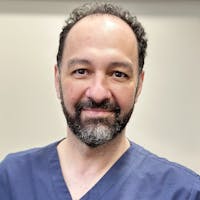
Dr. Sam Hanna
9:35-9:55am
Skin manifestations of rheumatologic diseases
Learning Objectives:
- Identify common and distinguishing cutaneous findings associated with key rheumatologic diseases, including lupus erythematosus, dermatomyositis, and vasculitis.
- Differentiate between primary and secondary Raynaud’s phenomenon, including clinical features, risk factors, and associated rheumatologic conditions.
- Review diagnostic strategies and management approaches for skin manifestations in rheumatologic patients, including indications for referral and biopsy.

Dr. Thanu Ruban
9:55-10:15am
Updates on paediatric and adult vitiligo
Learning Objectives:
- To review current insights on the pathogenesis of vitiligo
- To review the differential diagnosis of vitiligo
- To review the work-up and investigations to think about when assessing the vitiligo patient
- To provide an overview of novel treatments for vitiligo

Dr. Marisa Ponzo
Q & A Time (15 mins)
10:30-10:45am: 15-minute Coffee Break and Exhibit Viewing
10:45-12:15pm: Plenary Session 6
10:45-11:05am
Advances in the treatment of androgenetic alopecia
Learning Objectives:
- Review the underlying genetic and hormonal mechanisms contributing to androgenetic alopecia, including the role of dihydrotestosterone (DHT) and follicular miniaturization
- Review the current Health Canada-approved treatments, off-label therapies, and emerging innovations for androgenetic alopecia, including pharmacologic and procedural options
- Review key clinical and trichoscopic features of androgenetic alopecia and provide practical strategies to personalize treatment plans and improve patient outcomes

Dr. Kim Blakely
11:05-11:15am
SPONSORED SESSION: Rogaine and hair loss
Learning Objectives:

Dr. Marisa Ponzo
11:15-11:35am
Nail disorders for the primary care physician
Learning Objectives:
- Participants will be able to apply three key lessons that will immediately improve the care of their patients with nail conditions

Dr. Kendall Billick
11:35-11:55am
Best practices in the management of hidradenitis suppurativa
Learning Objectives:
- Identify and classify HS severity and differentiate it from common mimickers
- Review evidence-based treatment options for HS, including topical, systemic, and procedural therapies, and apply appropriate treatment strategies in primary care.
- Discuss multidisciplinary management approaches by outlining referral pathways, and supportive care measures to improve patient outcomes.

Dr. Raed Alhusayen
11:55-12:15pm
Vulvar dermatoses and postmenopausal skin
Learning Objectives:
- To differentiate lichen simplex chronicus from lichen sclerosus
- To recognize and treat lichen simplex chronicus and lichen sclerosus
- To review treatments for postmenopausal vulvar dryness

Dr. Amanda Selk
Q & A Time (15 mins)
12:30-1:30pm: Lunch
1:30-2:50pm: Plenary Session 7
1:30-1:50pm
Common skin lesions and how to treat them
Learning Objectives:
- Identify common benign skin lesions that can be managed through minor procedures in an office based setting (e.g., skin tags, DPN/seborrheic keratoses, benign nevi, cysts)
- Describe the indications, contraindications, and basic steps for performing minor dermatologic procedures such as cryotherapy and electrocautery
- Improve confidence in performing minor dermatologic procedures by reviewing case examples and best practices to minimize complications and optimize cosmetic outcomes

Dr. Rachel Ruppel
1:50-2:10pm
Cosmeceuticals in everyday practice
Learning Objectives:
- Clarify the classification of cosmeceuticals versus pharmaceuticals and cosmetics, highlighting regulatory implications
- Analyze clinical data to assess the effectiveness, safety, and appropriate use of various cosmeceuticals in daily practice
- Explore how digital trends influence consumer choices and clinical recommendations, including pediatric considerations, and help clarify practical considerations and clinical recommendations for use

Dr. Geeta Yadav
2:10-2:30pm
Minimally invasive aesthetic procedures
Learning Objectives:
- To analyze treatment planning for the aesthetic patient with a 360 degree approach to wellness
- To review different modalities used to achieve natural results
- To evaluate the impact on individual confidence of these treatments

Dr. Renita Ahluwalia
2:30-2:50pm
Clinical diversity in dermatology
Learning Objectives:
- Explore how common dermatologic conditions (e.g., eczema, psoriasis, melanoma) present differently in individuals with diverse skin types
- Identify dermatologic conditions that disproportionately affect individuals with diverse skin types
- Recognize potential challenges in accurately diagnosing dermatologic conditions in individuals with diverse skin types

Dr. Tiffany Chen
Q & A Time (15 mins)
3:05-3:15pm: Closing Remarks
3:15-4:00pm: Sponsor Table Viewing
Advance Your Expertise Register for DermInsight Now!
Register Today

